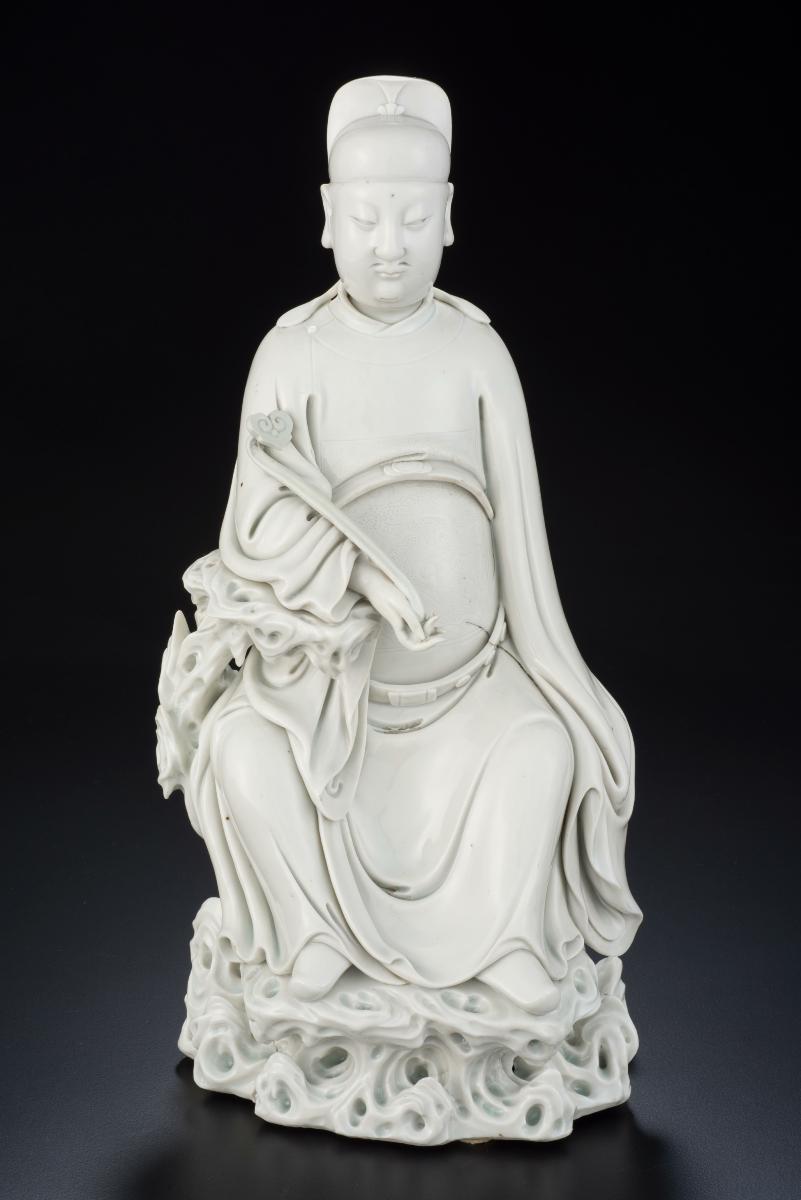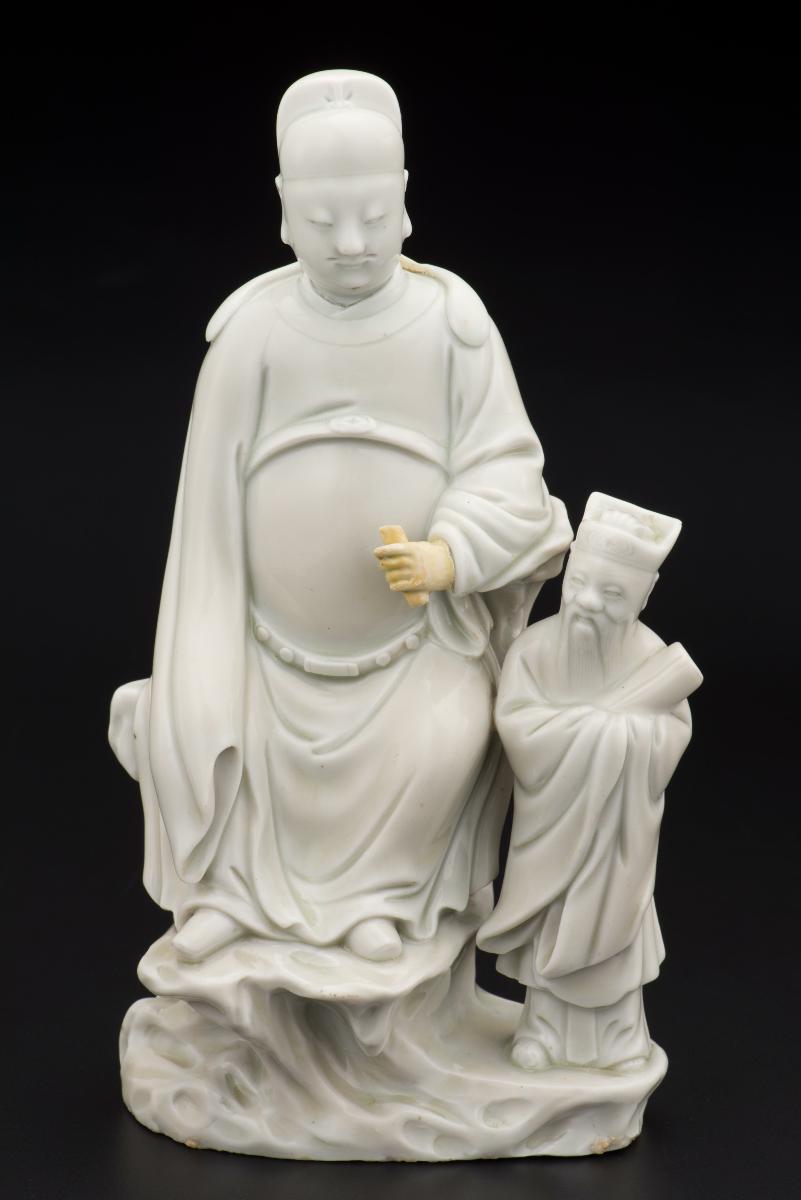Seated Wenchang (Daoist God of Literature), Dehua, Fujian province, China, early 17th century, porcelain.
Gift of Frank and Pamela Hickley, collection of Asian Civilisations Museum.

This is Wen Chang, the Daoist God of Literature. He is seated on a rock with a ruyi sceptre in his right hand, which symbolises blessing, power and health. The beautifully fluid drapery was finished with deeply carved folds, which emphasise the simple but voluminous style of the high official’s robe. His portly stature is indicated by the rank badges that were worn by court officials of the Ming (1368–1644) and Qing (1644–1911) dynasties.
Wen Chang is thought to have lived in the Tang (618–906) or Jin (1115–1234) dynasties before he was subsequently deified. He was worshipped by scholars hoping for fortuitous examination results. Today, school children in Singapore put letters at his feet listing the examination subjects and results that they hope to achieve.
Dehua, located on the southeast coast of Fujian province, is well known for its production of white porcelain, known to Europeans as 'blanc de Chine'. The earliest Dehua porcelain was produced as early as the 14th century but the production and quality of these porcelain peaked around the 17th and 18th centuries.
This is an extract from "The Singapore Story through 60 objects" written by Kennie Ting, Director, Asian Civilisations Museum and Peranakan Museum & Group Director of Museums, National Heritage Board. This article was first published in Cultural Connections Volume IV 2019 by Culture Academy Singapore.















